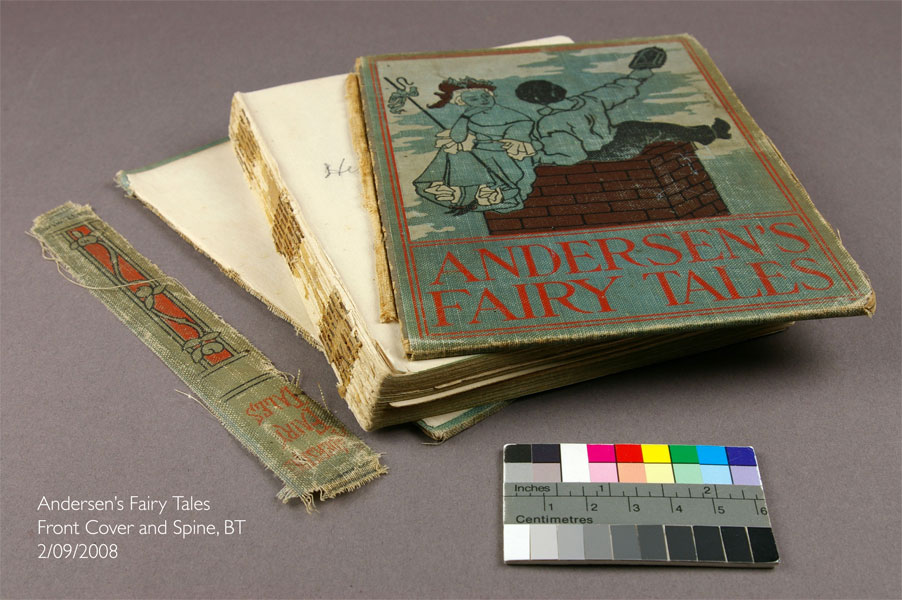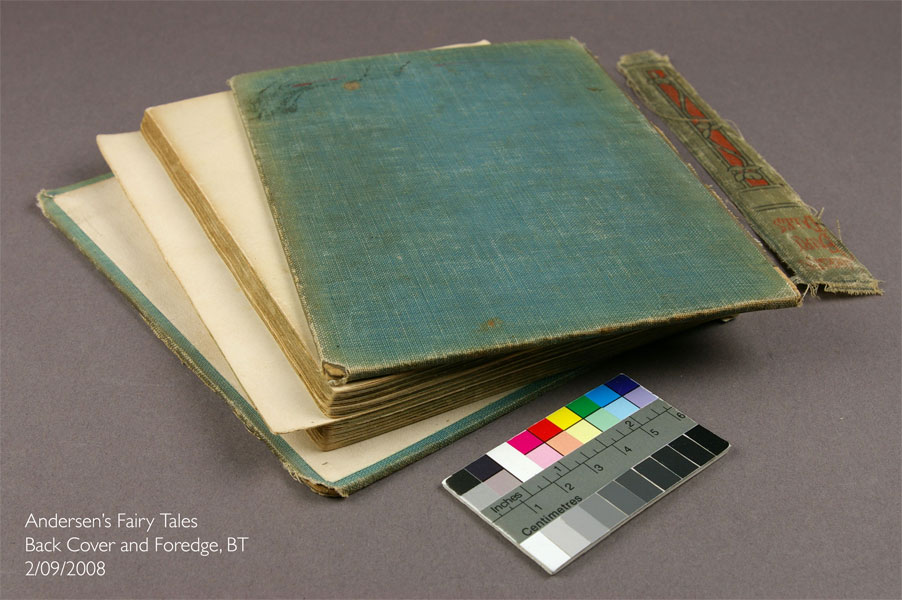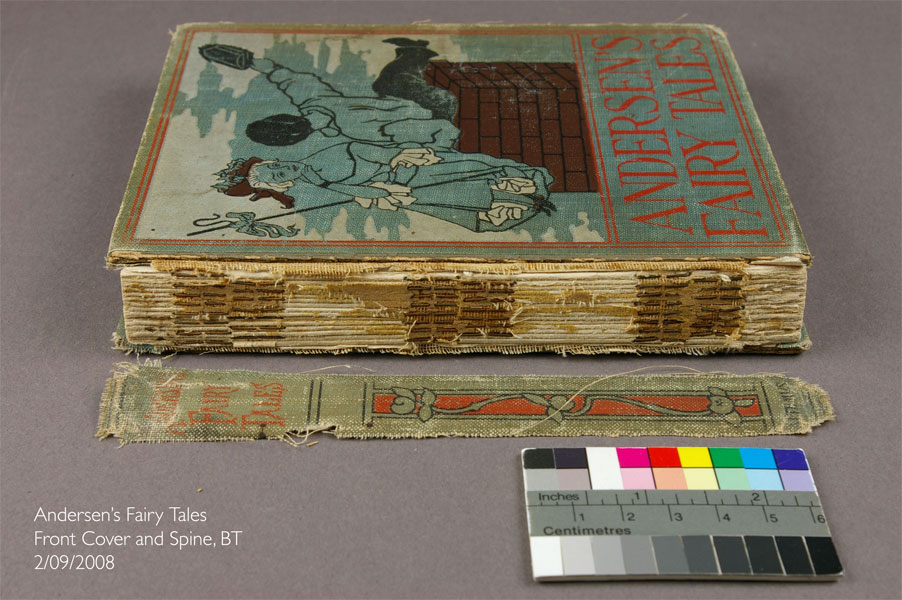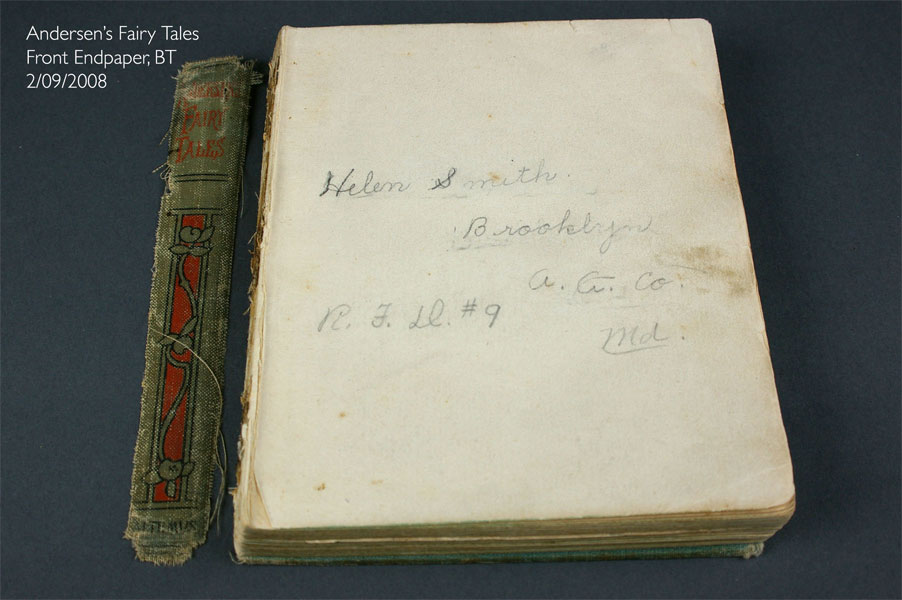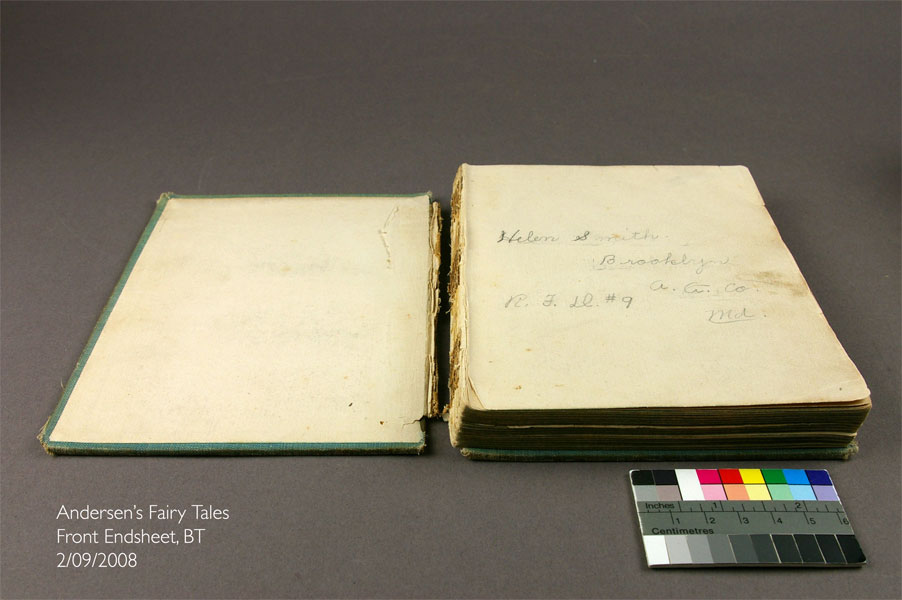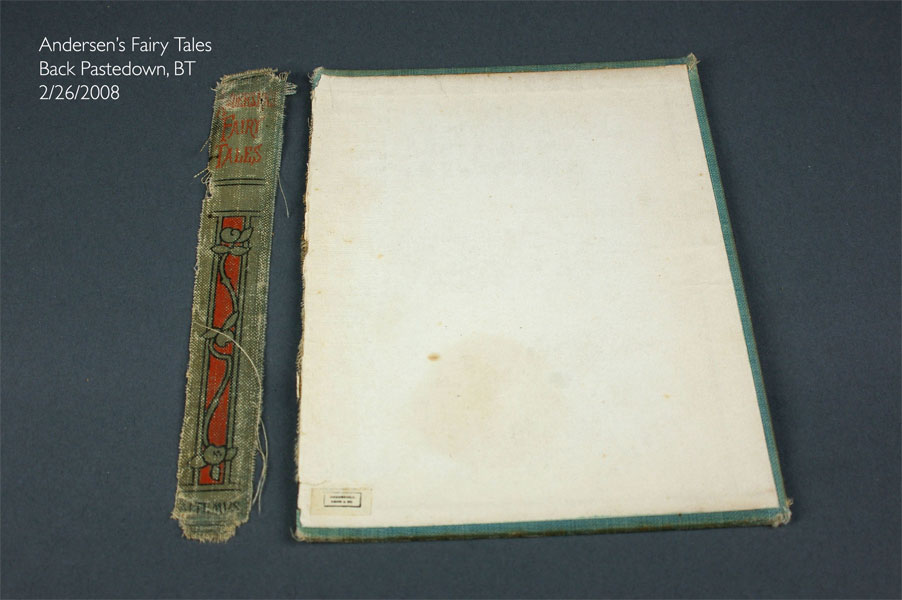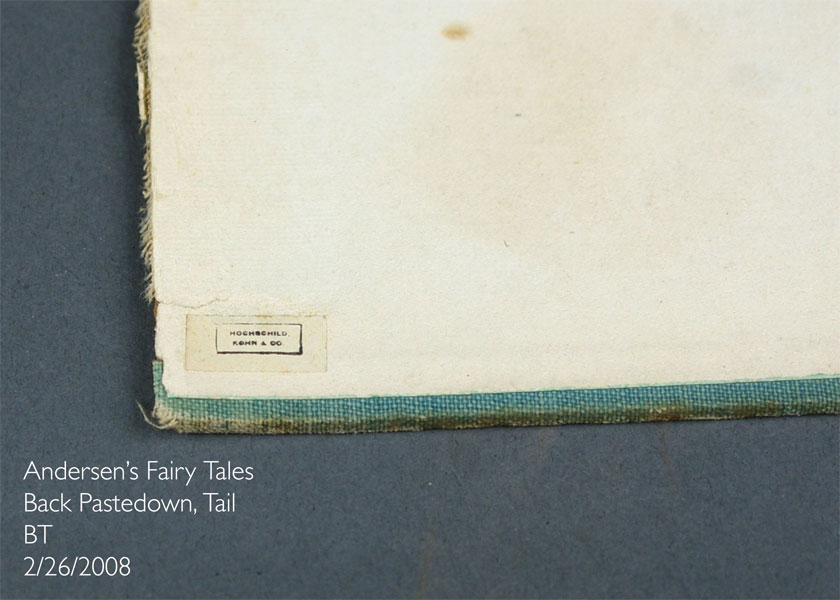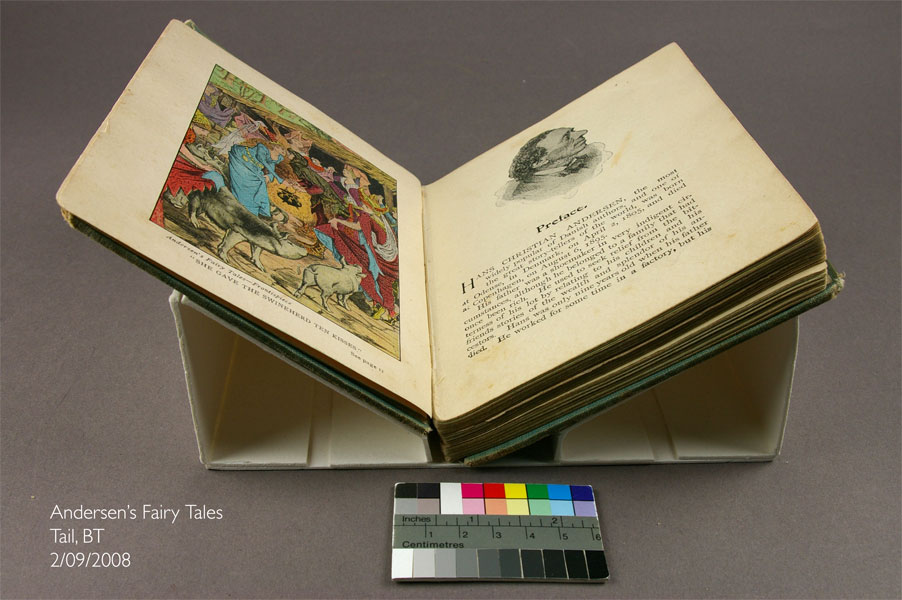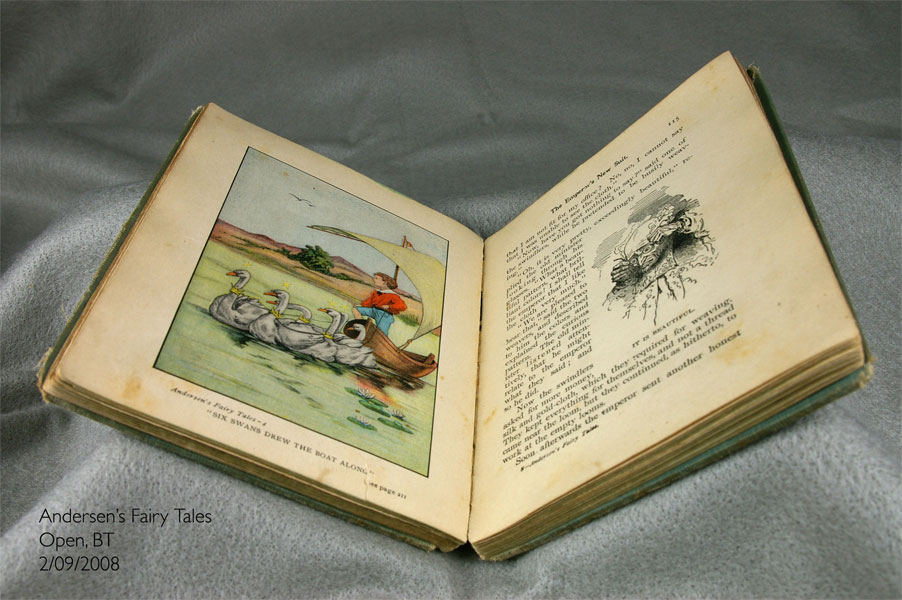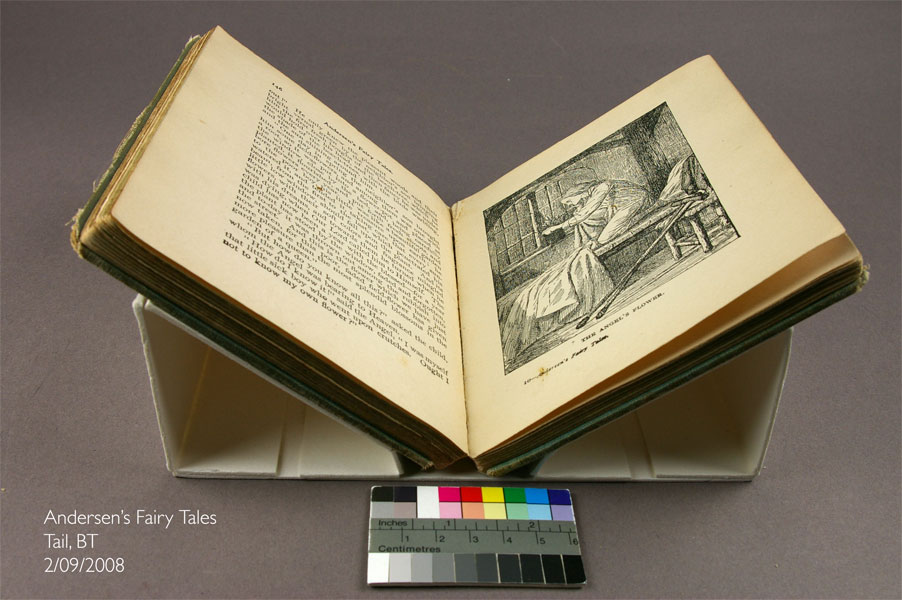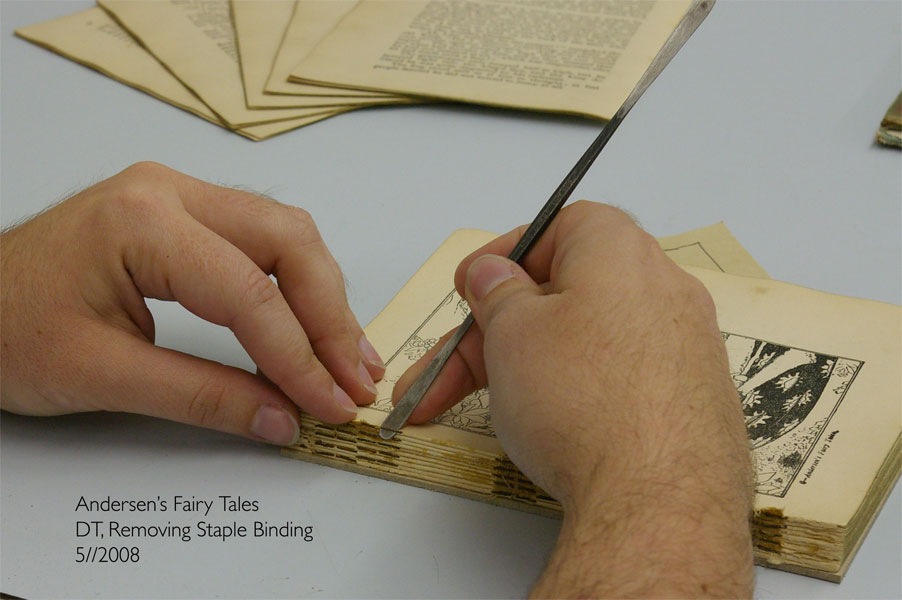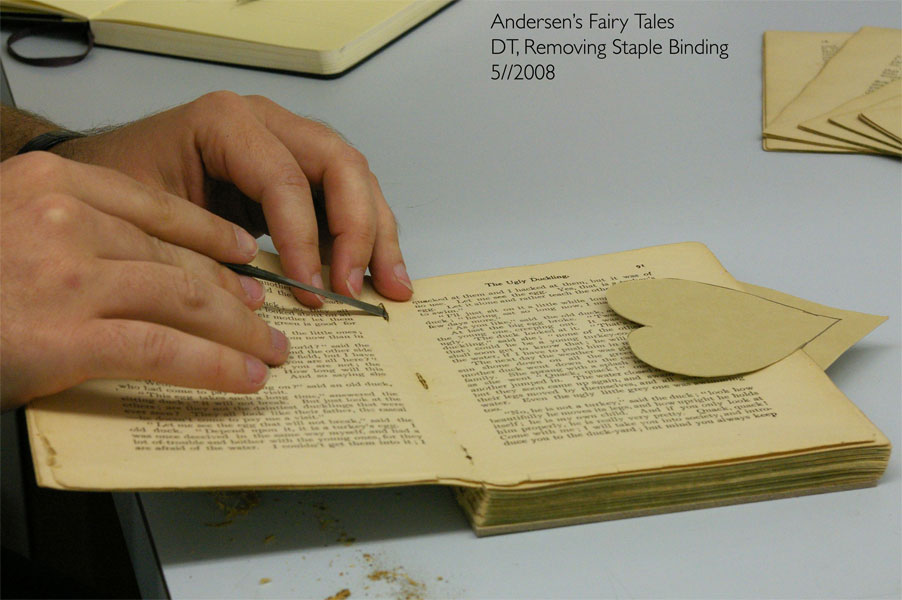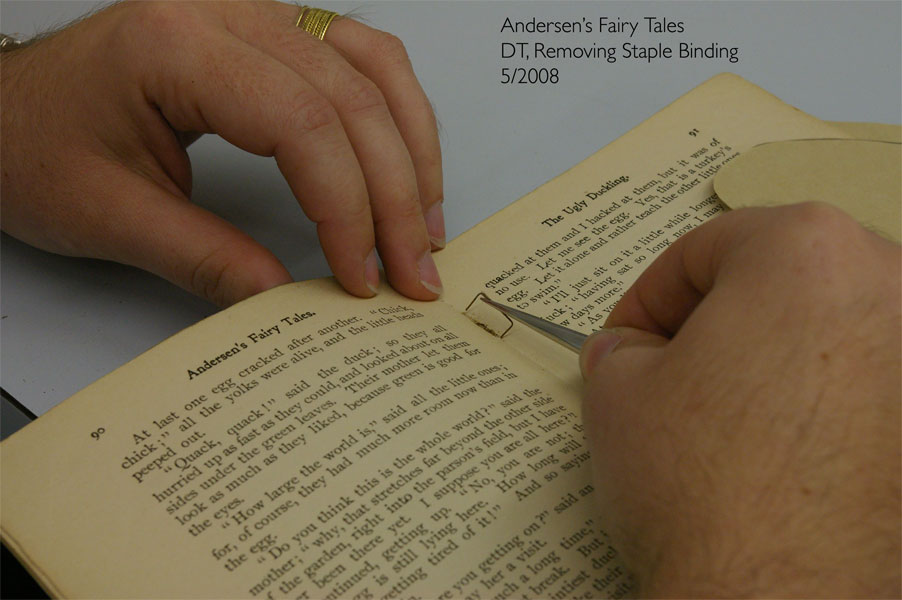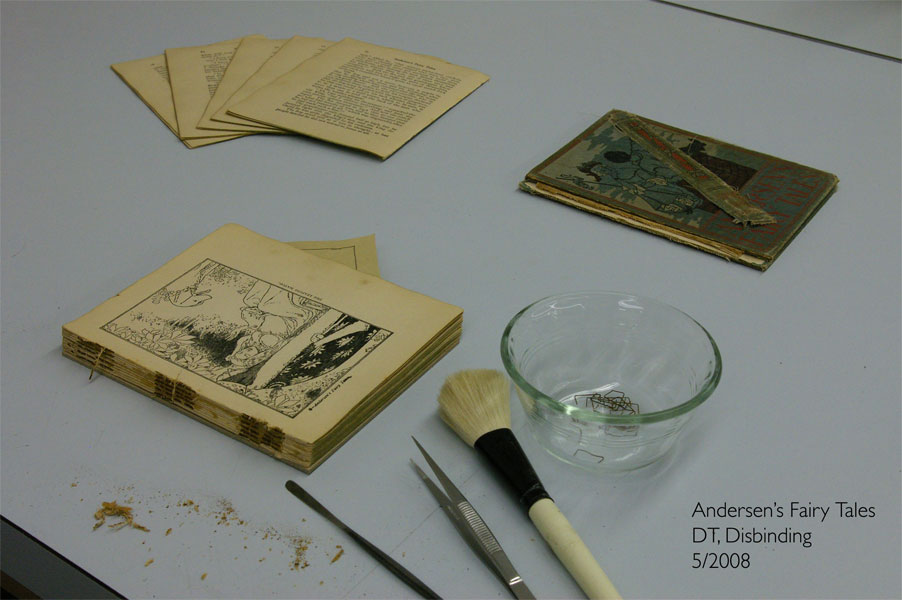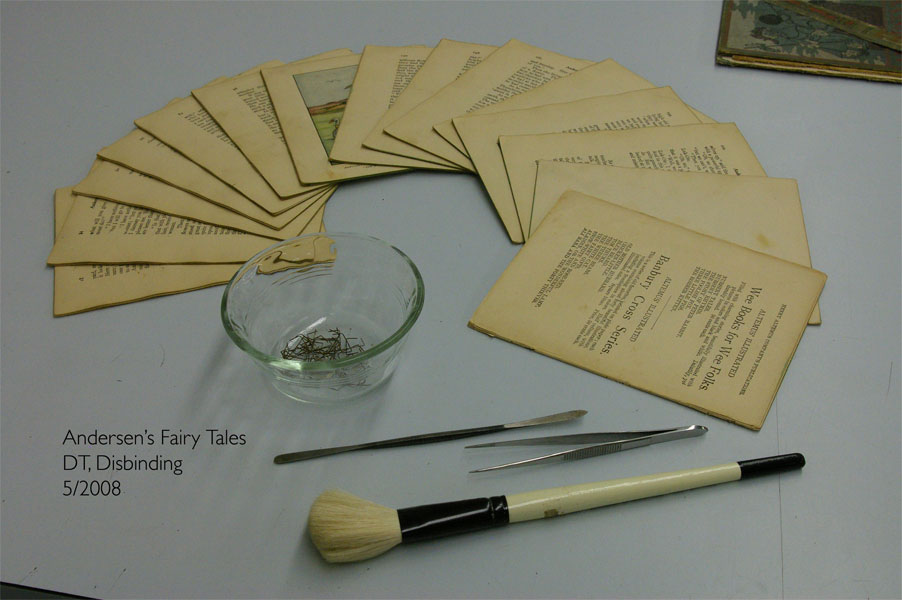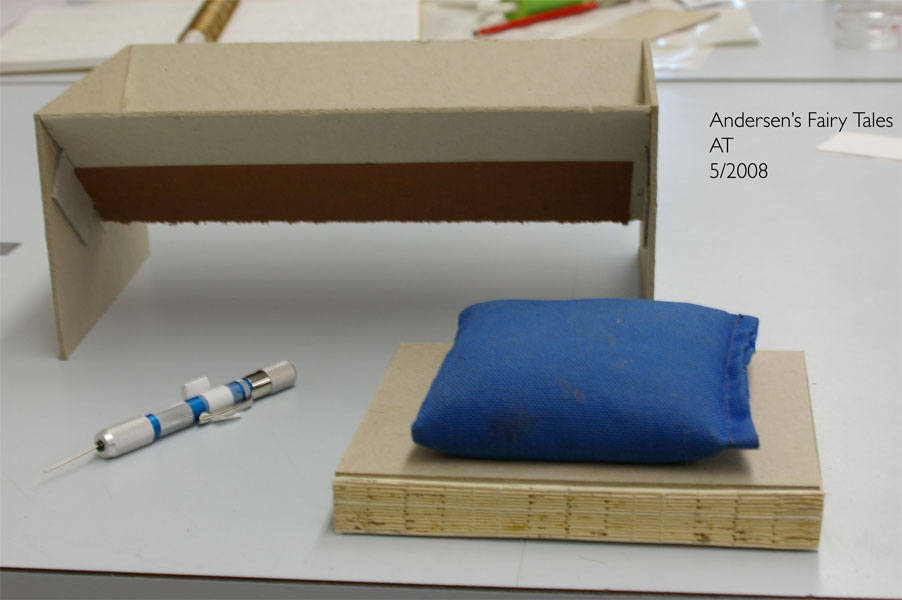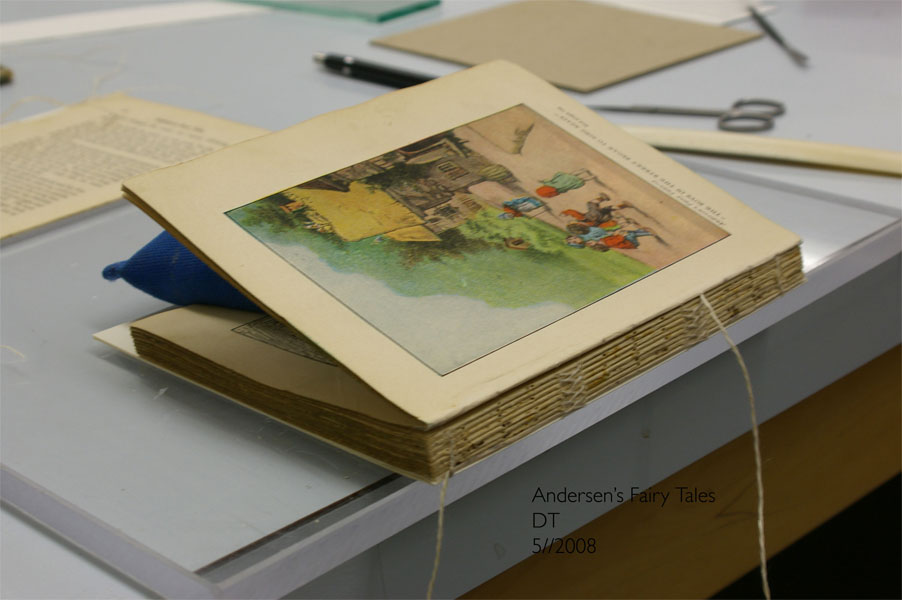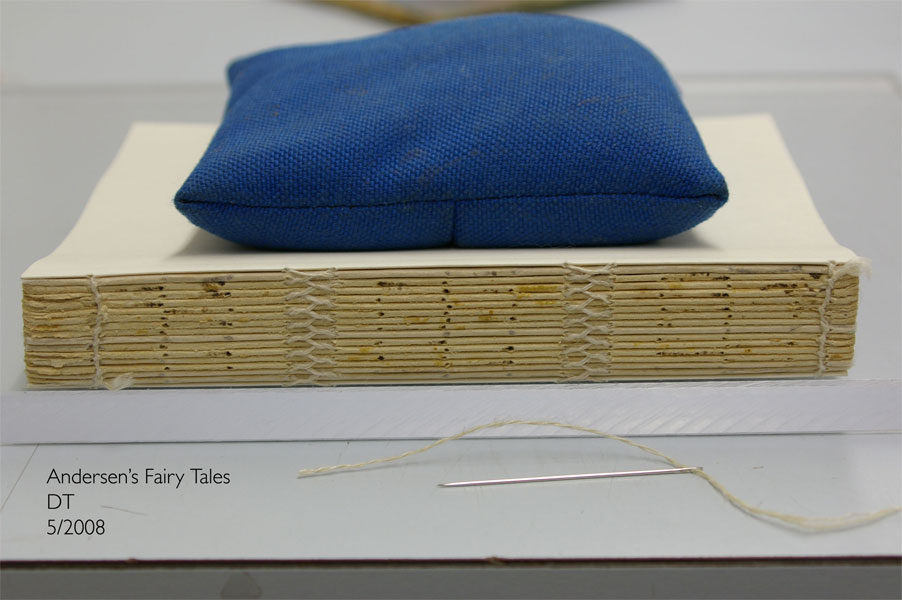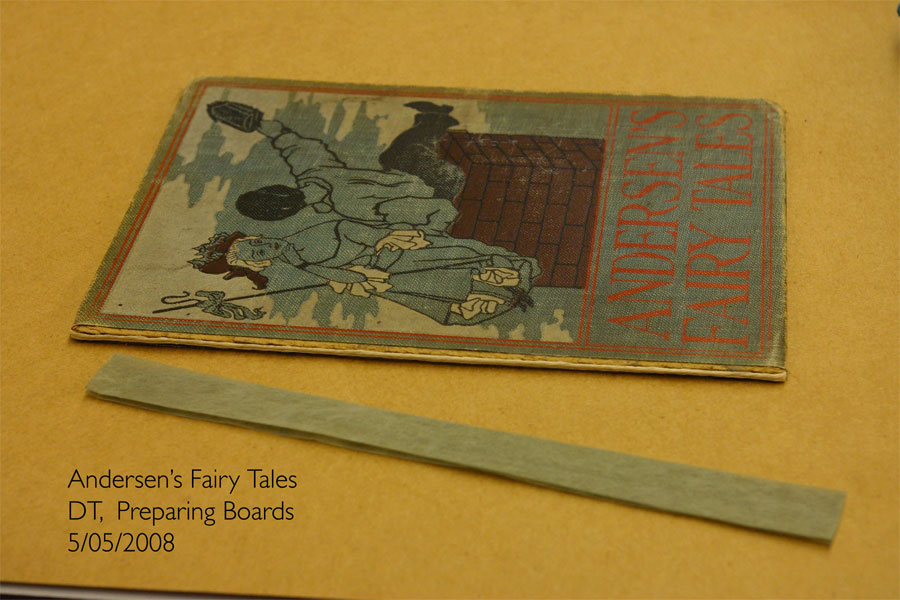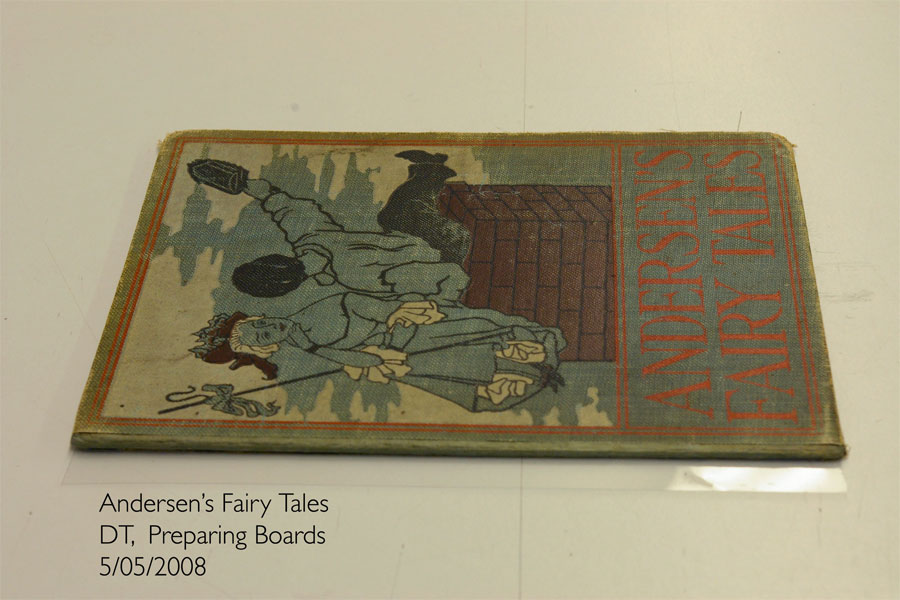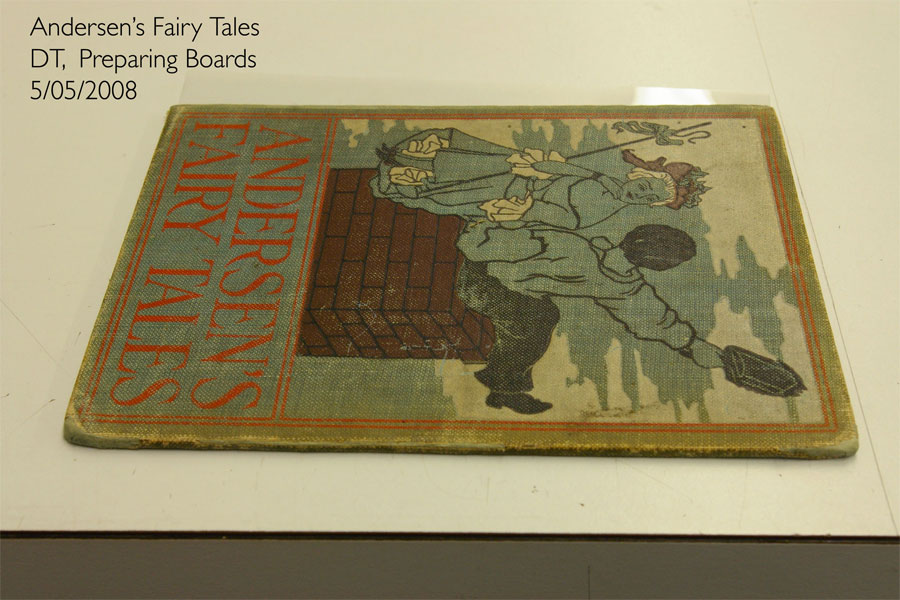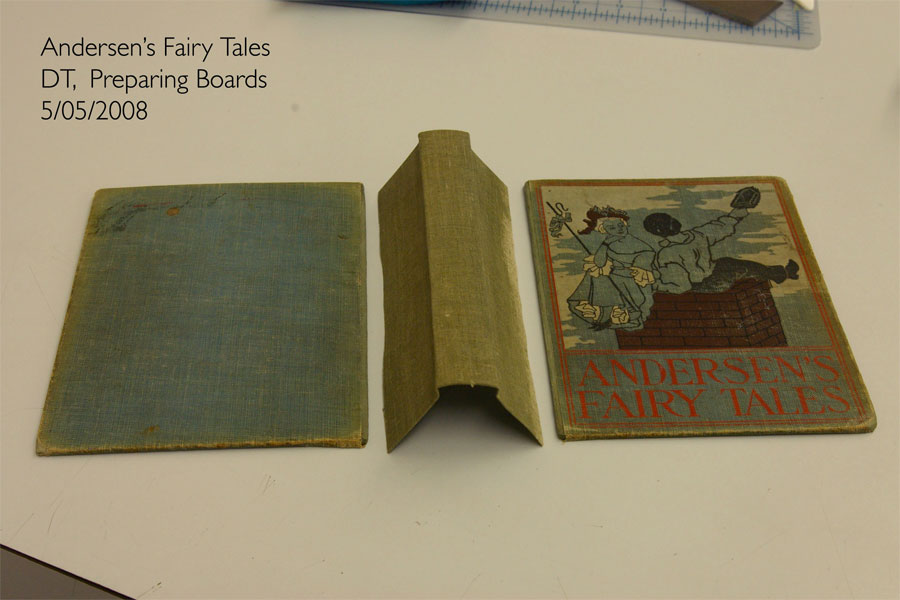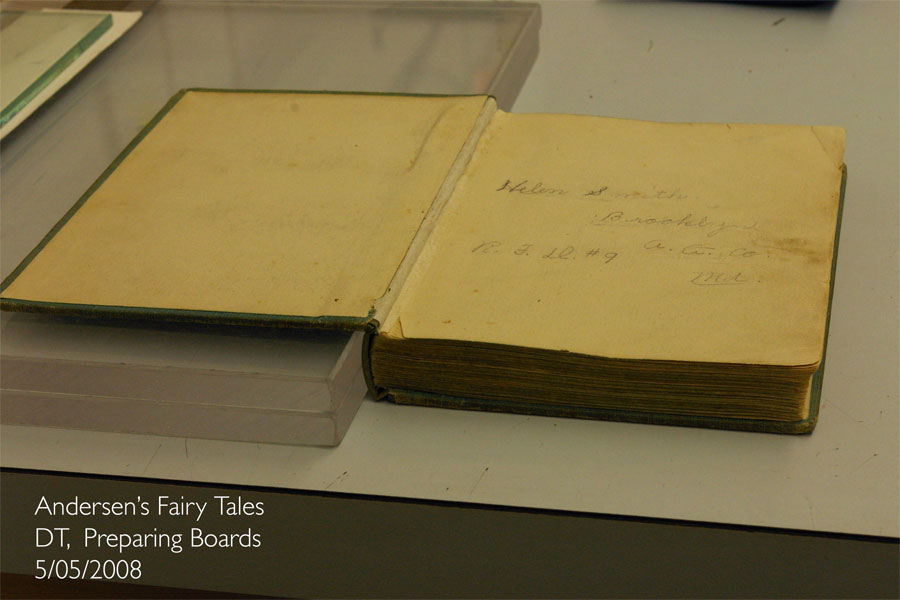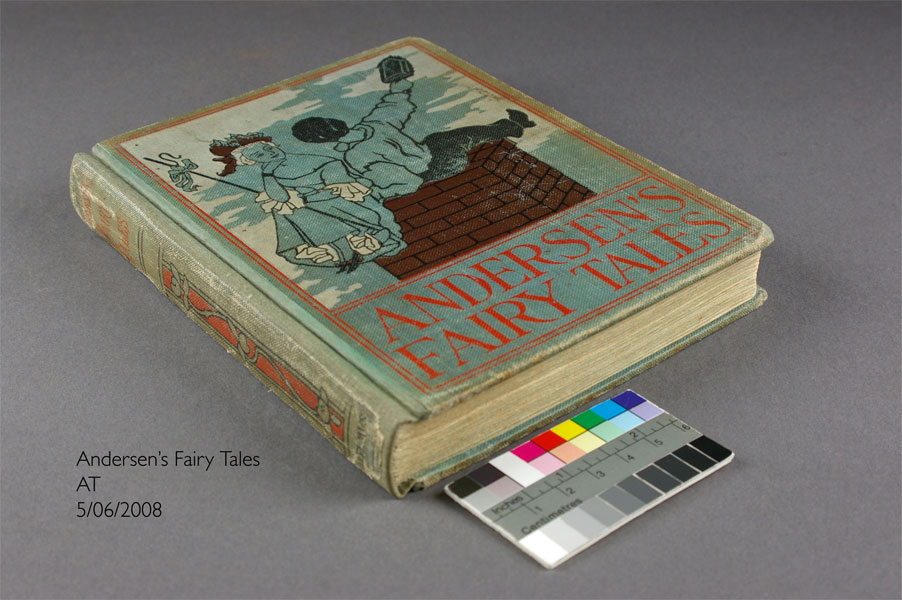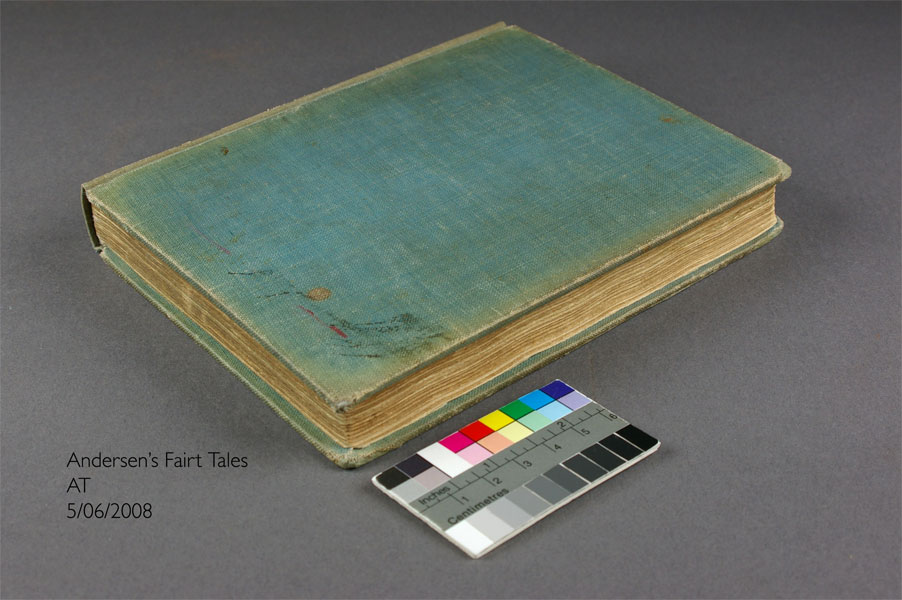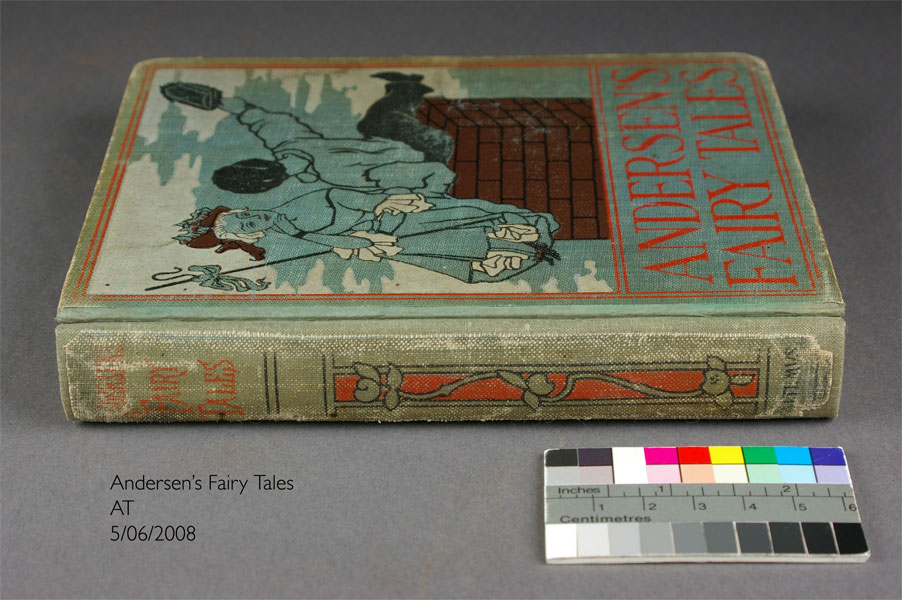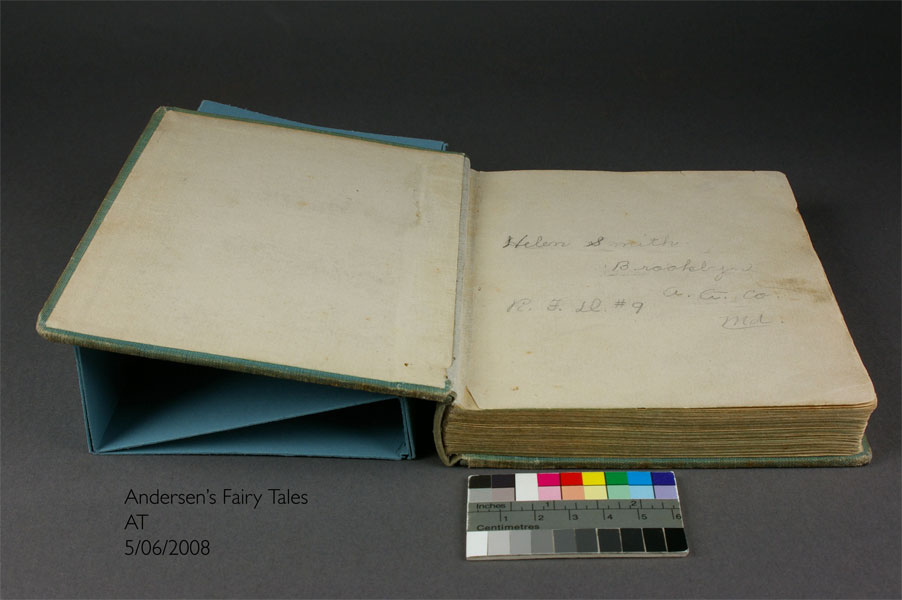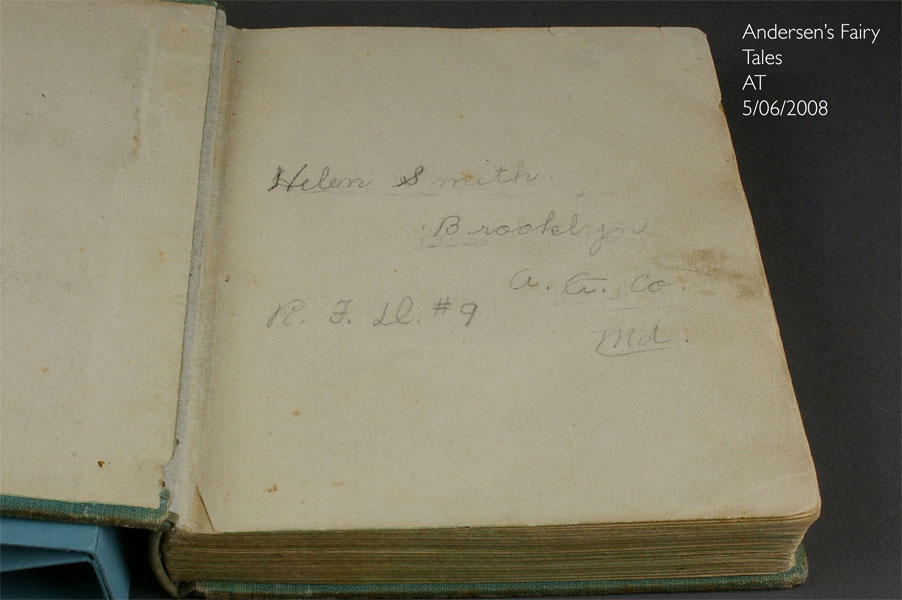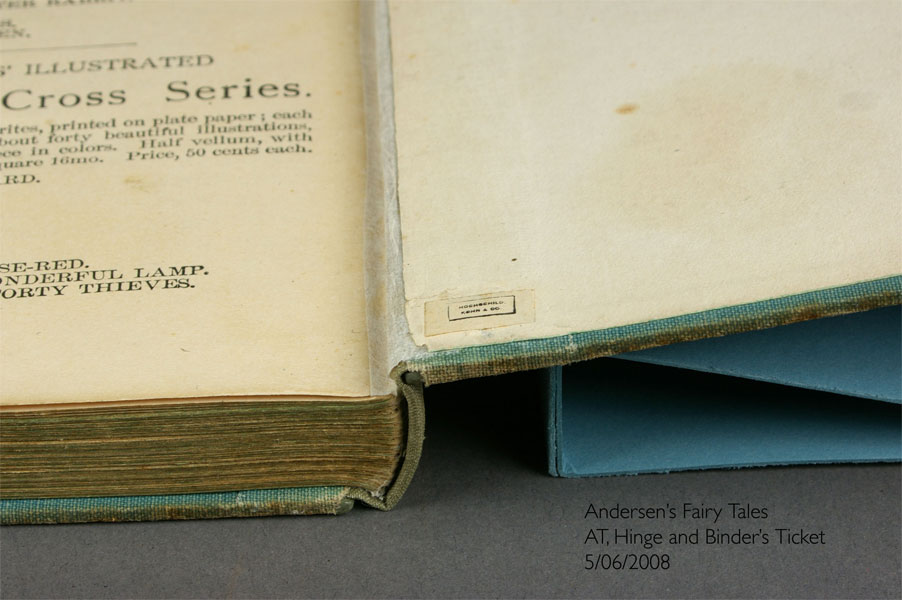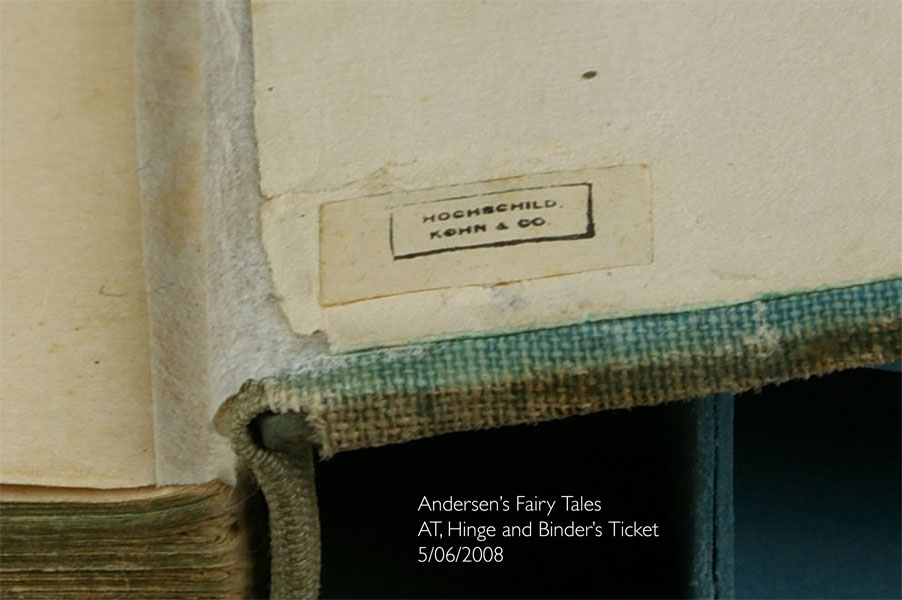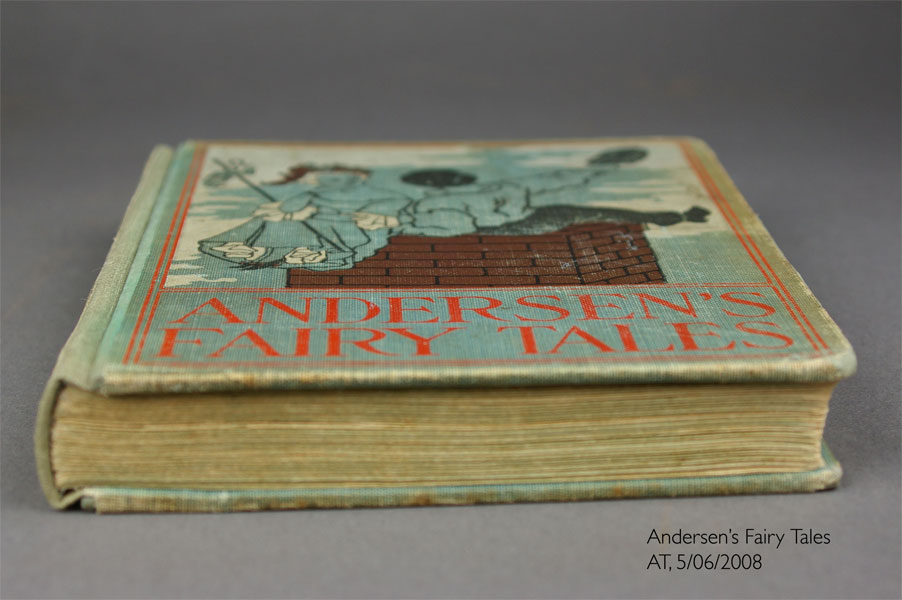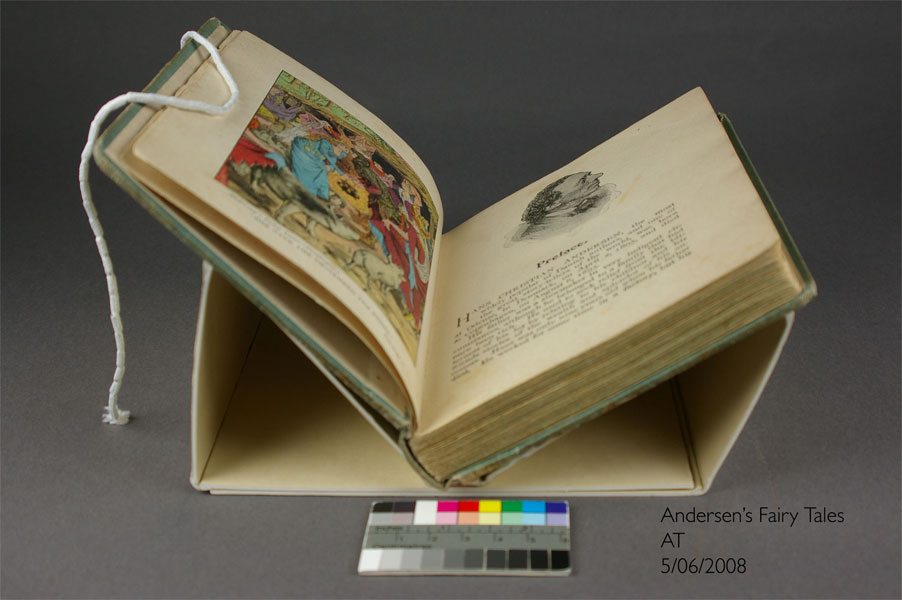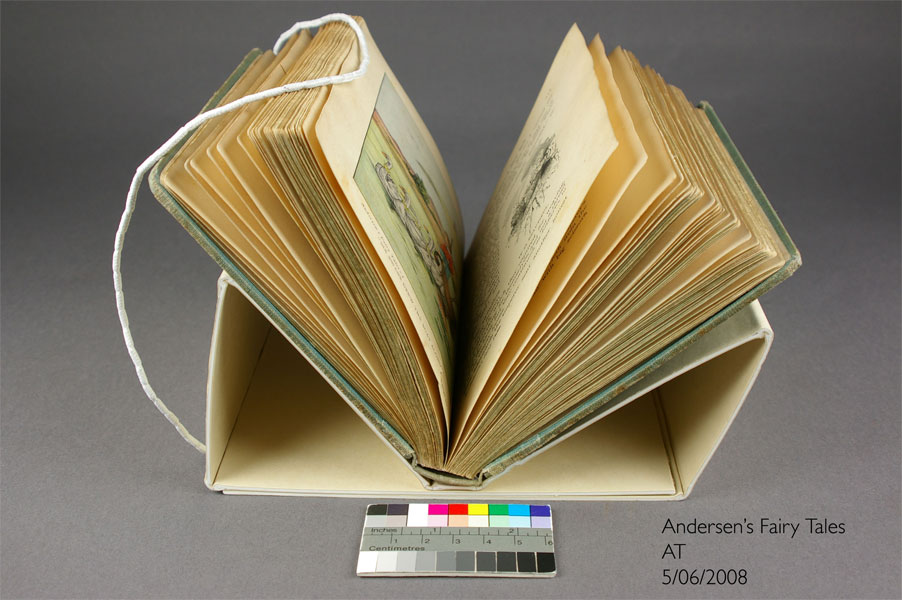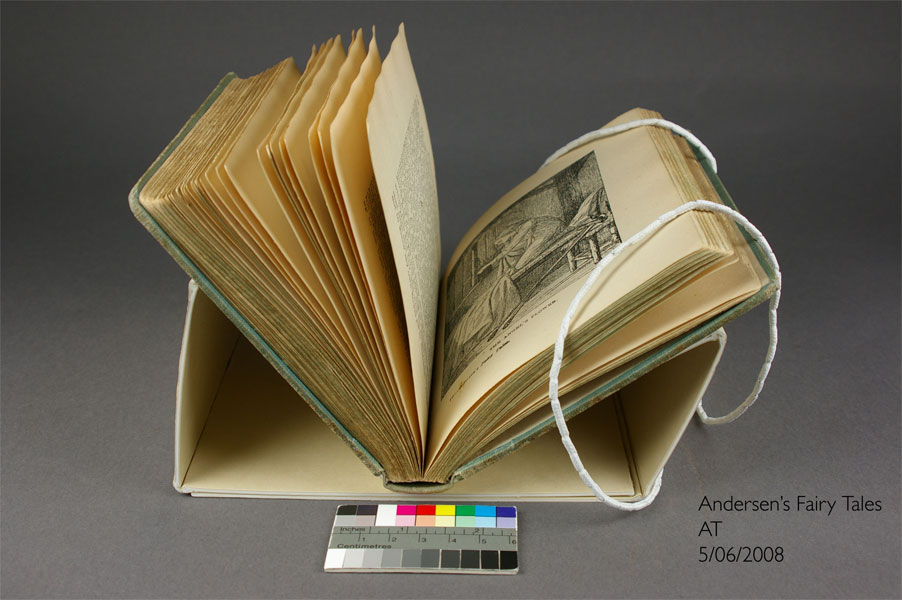Book Treatments
Andersen's Fairy Tales
Full Treatment
Photo Documention
- Before
- During
- After
Click thumbnails to view images.
Treatment Report
Treatment Objective
The objective of this treatment is to explore special collections treatment options for publishers cloth bindings.
Description
Author: Hans Christian Andersen
Title: Andersens Fairy Tales
Imprint: No date, Henry Altemus Co. Publications
Collation/foliation: 224 p. i-viii, 7-224, 1 un-numbered leaf, 1-16.
Format: Quarto
Dimensions (binding): H 16.9 x W 13.3 x T 2.3 (cm)
Dimensions (text block): H 16.2 x W 13.1 x T 1.9 (cm)
Binding: Part of Altemus Young People’s Library, the binding is consistent with the style of 1890’s Publisher’s Bindings with an artist designed cover in a flat poster style and classic Roman lettering (1). It is case bound with binder’s board and covered in full, green cloth. The cover is printed in three colors creating an illustration, and the spine and lower front cover is stamped in two colors embellishing the title with a floral design.
Textblock: The spine is flat with a moderate shoulder. The textile lining is adhered to the spine with animal glue and is mechanically attached through the fold of each section with metal staples at six stations to form a textile consolidation. The lining extends onto the inside of the boards under the pastedowns creating the case to text attachment. The single folio endleaves are tipped on. The first flyleaf contains manuscripts text written in graphite. There is a binder’s ticket in the lower left corner of the back pastedown, which reads “Hochschild Kohn & Co.” There are no endbands present.
Text Support & Media: The paper is a machine-made, beige, medium weight, wove paper, and is cross-grained. The edges are trimmed and colored green. The text medium is black printers ink. There are seventy-five illustrations throughout the text, including four-color lithography and wood engraving. The lithographic illustrations were sewn in.
Condition Summary
The case is detached from the textblock and the spine is detached from the case. The metal staples, which are severely corroded, are causing damage to the paper, and some sections are loose. Page 153 is detached. The textile lining is severely deteriorated and the adhesive on the spine has failed. The cover is soiled, stained and abraded; and the corners are bent and soft. Many of the leaves as well as the edges of the textblock are soiled. The paper has several tears and stains and has become somewhat brittle. There are tears on the pastedowns, apparently from previous attempts at repair. All media appear to be stable and in good condition.
PROPOSED TREATMENT SUMMARY
The textblock will be disbound and re-sewn, re-using the original staple holes, with a two-hole link stitch. The spine will be lined with a long-fiber reversibility lining, followed by an overhanging textile lining and a paper lining. The case will be rebuilt using the original boards and spine label. The re-built case will be attached to the text with new 80# Mohawk endsheet pastedowns and the overhanging textile lining. The corners will be consolidated with wheat starch paste, and the damaged cover will be retouched. All tears will be mended, the loose page will be hinged-in, and all soiled leaves and edges will be surface cleaned.
Photography
Digital images have been taken before, during, and after treatment in ambient light.
Treatment Performed
- 1. The textblock was disbound by opening the staples with a micro spatula and pulling them out with tweezers. Loose debris and corrosion products were deposited on the surface of the paper along the folds during disbanding, so the folios were surface cleaned with a soft brush.
- 2. Severely deteriorated sections were guarded with 100% Kozo machine-made tissue and Wheat Starch Paste (WSP).
- 3. New sewing holes were punched as the corroded staples had severely weakened the inner folios rendering the original holes unusable.
- 4. The textblock was re-sewn with a two-hole link stitch using 25/3 100% linen thread.
- 5. The textblock was consolidated with a 80:20 WSP/Methyl cellulose (MC) mix, and it was lined with a 100% Kozo tissue reversibility lining.
- 6. The textblock was lined with an overhanging textile lining of fine-weave airplane linen using a 3:1 mixture of Lascaux and WSP. In order to provide flexible support, an additional fine-weave airplane linen lining was used instead of a paper lining.
- 7. Lens tissue and fine-weave airplane linen were toned with acrylic paints (Cerulean Blue, Raw Umber, and Yellow Ochre) to match the covering material.
- 8. The boards were prepared by trimming the spine edges, lifting under the original textile lining under the pastedowns, and cutting tabs in the cloth turn-ins adjacent the textile lining.
- 9. Two four-twists of seaming twine were adhered to the spine edges of the boards with WSP/MC.
- 10. Toned tissue was wrapped around the spine edges of the boards – under the pastedown, over the seaming twine, and abutting the cloth cover.
- 11. Deteriorated corners and board edges were reinforced and covered with WSP/MC and toned lens tissue and Usumino tissue.
- 12. A replacement spine piece was made with toned airplane linen, lined with lens tissue. A spine strip of airplane linen was inserted into the spine of the replacement spine piece and adhered with Lascaux/WSP.
- 13. The spine piece was inserted under the pastedowns of the boards using Lascaux/WSP, forming the new case.
- 14. The textblock was cased-in by tucking the textile lining under the pastedowns with Lascaux/WSP, and was allowed to dry with the boards open.
- 15. The lifted pastedowns and tabs were re-adhered with Lascaux/WSP.
- 16. The hinge areas were reinforced with 100% Kozo natural tissue and WSP/MC.
- 17. The original spine label was adhered with Lascaux/WSP.
- 18. The covering material was touched up with colored pencil.
- 19. Tears were mended with WSP/MC.
Materials Used
- 1. Kozo natural tissue (Hiromi, 2004, HM-10)
- 2. Machine-made Kozo tissue (Hiromi)
- 3. Usumino tissue (Hiromi)
- 4. Lens tissue
- 5. Fine-weave airplane linen
- 6. 100% linen seaming twine
- 7. 100% linen 25/3 sewing thread
- 8. Liquitex professional acrylic paints – Cerulean Blue, Raw Umber, Yellow Ochre
- 9. Lascaux 498HV (Talas)
- 10. Precipitated wheat starch paste mixed 1:4 with distilled water, cooked 20 minutes (Colophon)
- 11. Methyl cellulose 2.5% dispersed in hot then cold distilled water (Fischer 4000 cps.)
- 12. Colored pencil
Notes
American Book Covers 1830-1900, A Pictorial Guide. Library of Congress, Binding and Collections Division, Preservation Directorate, 1998.
